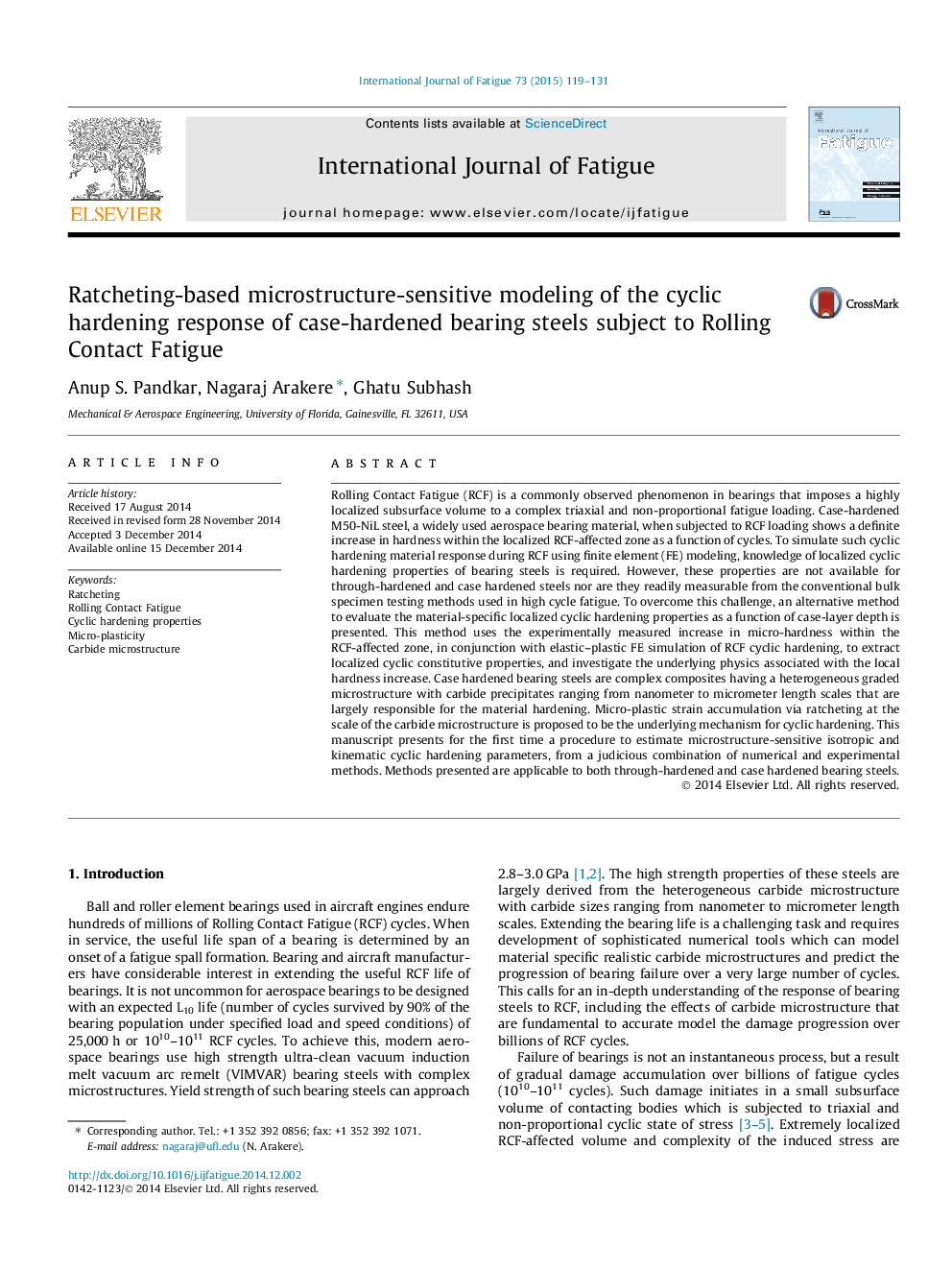| Article ID | Journal | Published Year | Pages | File Type |
|---|---|---|---|---|
| 776719 | International Journal of Fatigue | 2015 | 13 Pages |
•Cyclic hardening response of M50-NiL bearing steel subject to RCF is investigated.•Depth dependent cyclic hardening parameters are estimated for bearing steel.•Localized ratcheting near carbides is shown to be the driver of cyclic hardening.•Elastic–plastic FE simulations are performed to match the experimental results.•Various combinations of isotropic/kinematic hardening models are studied.
Rolling Contact Fatigue (RCF) is a commonly observed phenomenon in bearings that imposes a highly localized subsurface volume to a complex triaxial and non-proportional fatigue loading. Case-hardened M50-NiL steel, a widely used aerospace bearing material, when subjected to RCF loading shows a definite increase in hardness within the localized RCF-affected zone as a function of cycles. To simulate such cyclic hardening material response during RCF using finite element (FE) modeling, knowledge of localized cyclic hardening properties of bearing steels is required. However, these properties are not available for through-hardened and case hardened steels nor are they readily measurable from the conventional bulk specimen testing methods used in high cycle fatigue. To overcome this challenge, an alternative method to evaluate the material-specific localized cyclic hardening properties as a function of case-layer depth is presented. This method uses the experimentally measured increase in micro-hardness within the RCF-affected zone, in conjunction with elastic–plastic FE simulation of RCF cyclic hardening, to extract localized cyclic constitutive properties, and investigate the underlying physics associated with the local hardness increase. Case hardened bearing steels are complex composites having a heterogeneous graded microstructure with carbide precipitates ranging from nanometer to micrometer length scales that are largely responsible for the material hardening. Micro-plastic strain accumulation via ratcheting at the scale of the carbide microstructure is proposed to be the underlying mechanism for cyclic hardening. This manuscript presents for the first time a procedure to estimate microstructure-sensitive isotropic and kinematic cyclic hardening parameters, from a judicious combination of numerical and experimental methods. Methods presented are applicable to both through-hardened and case hardened bearing steels.
